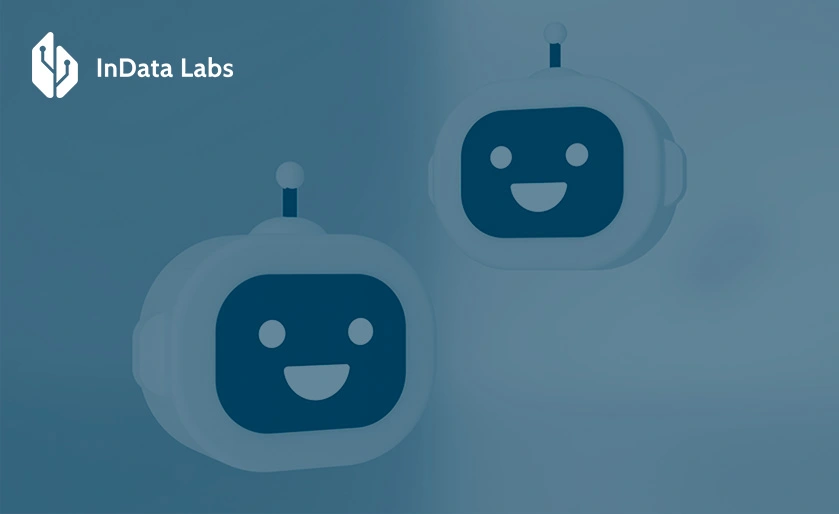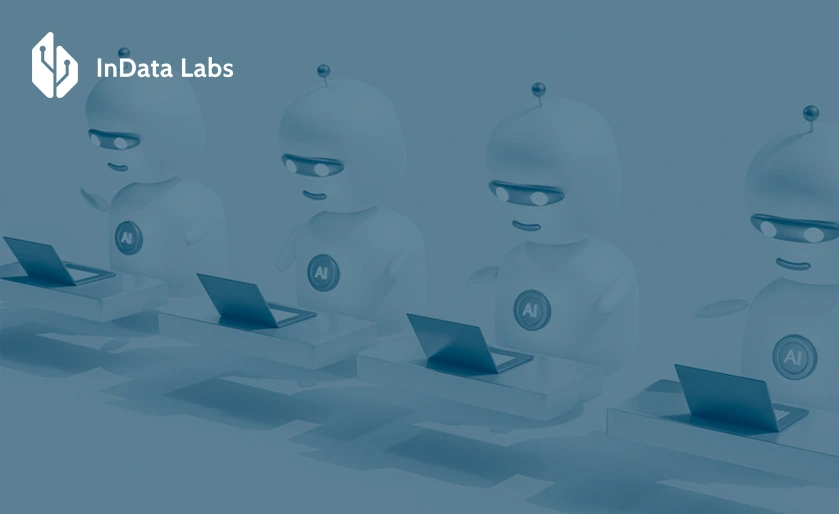Living in a world where 80% of data is unstructured, organizations have immense insights hidden in text data derived from customer feedback, social media, emails, and medical records. While the extraction of such insight is tough and demanding, NLP solutions use artificial intelligence to enable computers to understand, analyze, and even generate human language. This article identifies 11 innovative NLP solutions that help convert unstructured data into actionable insights across a wide range of industries, thus upgrading customer service and data analytics functions.
To begin, what exactly are NLP solutions?
NLP solutions use AI to enable computers to understand, interpret, and generate human language. The ability of such technologies to parse textual data for significant information and return responses that are contextually relevant hugely impacts all those organizations that need to uncover insights from unstructured data, be it customer service, insights, or data analytics.

Source: Unsplash
Understanding NLP solutions and their business impact
NLP lets computers read and process human language, turning unstructured data into prized assets in the process. Using NLP, companies are able to automate processes and operational efficiencies and unearth deep insights into customer behavior and changing market dynamics. To learn more about how specifically NLP can help your business, find out more about how NLP helps businesses.
Chatbots and virtual assistants: Enhancing customer support
With the aid of natural language processing, chatbots and virtual assistants will provide immediate customer support, answer queries, and even set appointments. For example, Apple’s Siri uses NLP to understand voice commands and respond appropriately. In customer service, Intercom uses chatbots to manage several inquiries at the same time. This improves response time and reduces the workload on human agents.
Aurora Borea from InDataLabs holds first place in the NLP virtual assistants line. Aurora uses advanced natural language understanding to create an individual customer experience and is a precious tool for helping customer service. Click here to find out more about Aurora Borea’s capabilities.

Text classification: Streamlining customer interactions
Text classification groups texts into pre-defined categories to enable organizations to automate their workflows and manage operational efficiency. For example, text classification can help Zendesk’s support systems understand the meaning of text and classify their support tickets into categories of complaints, inquiries, or feedback. That reduces response times and appreciably increases the quality of service. It is text analysis services that help businesses attain these improvements in streamlining operations.
Text summarization: Streamlining information for enhanced efficiency
Text summarization refers to generating concise summaries from lengthy documents, and this is very helpful in fields requiring fast information. Applications like SummarizeBot support lawyers by summarized-long legal texts, hence saving time in preparing the cases. In medical fields, text summarization facilitates rapid communication with doctors regarding the history and treatment strategies of a patient, hence enhancing efficiency and effective decision-making.
Machine translation: Breaking language barriers
This machine translation with the use of NLP allows for instant text translations, which, therefore, makes communication with the rest of the world possible. As expected, Google Translate enables companies to communicate well with their clients and business associates across the world by simply translating marketing materials, support documents, and internal communications into various languages, ensuring clarity and consistency.

Source: Unsplash
Sentiment analysis: Assessing customer emotions
Sentiment analysis involves the examination of text to ascertain the prevailing sentiment, whether it be positive, negative, or neutral. This methodology is utilized by organizations to track mentions on social media and analyze customer feedback, thereby identifying opportunities for enhancement and measuring the effectiveness of marketing initiatives. Solutions such as Lexalytics offer businesses critical insights into customer emotions, facilitating informed decision-making based on data.
Named entity recognition (NER): Extracting key information
NER is a process that identifies and categorizes named entities within a text, including individuals, organizations, geographical locations, and temporal references. In the healthcare sector, this technology is employed to extract patient names, medication information, and appointment schedules from medical records, thereby minimizing manual data entry errors and enhancing data management efficiency. SpaCy, a widely used open-source natural language processing library, provides powerful NER functionalities suitable for diverse applications.
Topic modeling: Revealing concealed themes
Topic modeling serves to reveal thematic frameworks within extensive text datasets, rendering it essential for market research and trend analysis. Organizations utilize tools such as Gensim to scrutinize customer feedback and social media discussions, thereby identifying emerging trends and consumer preferences. This enables them to adjust their products and services in accordance with changing demands.

Source: Unsplash
Speech recognition: Converting speech to text
Speech recognition employs natural language processing (NLP) to transform spoken words into written text. This technology plays a crucial role in various sectors, particularly in healthcare, where it facilitates the transcription of patient notes and the documentation of medical dictations. Additionally, legal professionals utilize speech recognition for transcribing court proceedings and preparing documents, thereby improving both accuracy and efficiency.
Question answering systems: Delivering immediate responses
Question answering (QA) systems leverage natural language processing (NLP) to comprehend inquiries presented in everyday language and deliver precise answers. Solutions such as IBM Watson have been utilized in customer service and internal knowledge management, offering both employees and customers swift and dependable information, thereby enhancing satisfaction and productivity.

Source: Unsplash
Text-to-speech (TTS): Improving accessibility for users
Text-to-speech (TTS) technology, driven by natural language processing, transforms written content into audible speech. This technology is extensively utilized in customer service settings to deliver verbal responses and accessibility solutions for individuals with visual impairments, thereby enriching the overall user experience.
Document clustering: Structuring information
Document clustering employs natural language processing to categorize similar documents, thereby facilitating the organization and retrieval of information. This method is applied in both research and business settings to enhance the efficiency of locating pertinent documents, leading to a notable reduction in the time required for information searches.

Source: Unsplash
NLP solutions in data visualization and analytics: Benefits
Natural language processing and data visualization technologies collaborate to transform complex textual data into clear and actionable visual representations. By leveraging NLP capabilities, organizations can convert unstructured text into engaging visual formats—such as word clouds, bar graphs, or line charts—that enhance the comprehensibility of intricate information. This synergy not only improves data visualization but also expedites decision-making processes.
- Automated suggestions: NLP-driven tools can automatically recommend the most suitable chart types for your data, conserving valuable time and ensuring that visual representations are both precise and meaningful.
- Code generation and problem resolution: Advanced NLP solutions can create code snippets and address visualization issues, promoting a more seamless and efficient data analysis experience.
- Enhanced insight extraction: By integrating these advanced technologies, organizations can significantly enhance their data visualization capabilities, leading to a deeper understanding of extensive text data.
For example, data visualization tools that use NLP can include automatic learning style maps, code symbols, and problem visualizations to ensure that data understanding is accurate and interpretable yes. Organizations will enhance their data visualization capabilities by using such tools in their work, and will more easily extract the best views from large amounts of data, providing new data science solutions.
To discover how combining data visualization with NLP can transform your data analysis efforts and unlock other valuable benefits, consider the following:
Text-to-visual data conversion
This involves using natural language to transform raw data into other visual data clouds, bars, and columns. charts to make it easier to understand and interpret. For example, this could include seeing the context of customer feedback, sharing content and opinions, or even seeing content being mentioned on social media and talking to each other. This will provide better visualization of information, allowing participants to understand important information more quickly.

Source: Unsplash
Data extraction and cleaning
Remove relevant content or user comments from the website and organize them for review. This automation reduces the time and work involved in data preparation, reduces the potential for error, and ensures that data is ready for further analysis. For example, companies can use NLP to identify what is being said and categorize it based on sentiment, making it easier to analyze information clearly and effectively.
Data analysis and insights:
NLP is capable of analyzing text data to identify trends, patterns, and insights, providing organizations with actionable intelligence. For example, by evaluating client feedback using NLP, businesses detect repeated complaints or ideas, allowing them to address problems and improve their products or services.
Furthermore, NLP can be applied to assess internal documents and communications, revealing insights that inform strategic decision-making and operational enhancements.

Source: Unsplash
Interactive dashboards and reports
NLP can facilitate the development of interactive dashboards and reports that empower users to navigate data and derive insights in a more intuitive manner. For example, dashboards powered by NLP can allow users to search for specific keywords or topics within extensive datasets, offering a more dynamic and user-friendly experience for data exploration. This capability simplifies stakeholder interaction with data, enabling the discovery of deeper insights and informed decision-making based on thorough data analysis.
Additional NLP business applications
In addition to the specific solutions previously mentioned, natural language processing presents a diverse array of applications for businesses, including the following:
- Fraud detection: NLP can scrutinize financial transactions to identify and flag potentially fraudulent activities, thereby safeguarding businesses against financial misconduct.
- Social media monitoring: NLP facilitates the tracking of brand mentions and customer sentiment across social media platforms, yielding valuable insights into public perception and brand reputation. Discover how ChatGPT is revolutionizing social media monitoring through NLP.
- Content creation: Generative AI utilizes NLP to create various text formats, enhancing content marketing initiatives by generating articles, blog posts, and social media updates. By leveraging advanced generative AI techniques, companies can streamline content creation, making it more efficient and scalable.
- Customer relationship management (CRM): NLP analyzes customer interactions to provide insights into preferences and behaviors, enhancing customer relationship strategies.
- Knowledge management: NLP technologies can effectively organize and retrieve information from extensive knowledge bases, enabling employees to access pertinent information swiftly. This capability enhances productivity and supports improved decision-making within the organization.
Closing thoughts
Leveraging natural language processing can significantly enhance business operations, drive efficiency, and improve customer engagement. By automating routine tasks, analyzing customer sentiment, and extracting valuable insights from vast amounts of data, NLP empowers organizations to make informed decisions and tailor their services to meet customer needs. As technology continues to evolve, embracing NLP will not only help businesses stay competitive but also foster deeper connections with their audiences.



